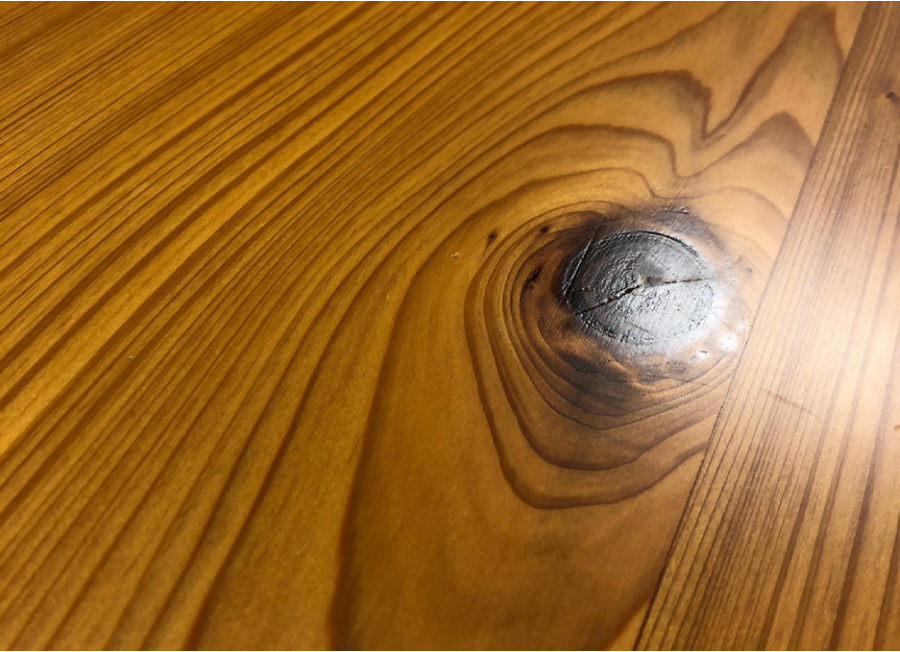
 Imagine the last coat of finish on a new hardwood floor has been applied and it’s time to use the floor, but it feels sticky. This is known as Sticky Board Syndrome. Sticky Board Syndrome is a condition on a
wood floor where the finish does not dry, adhere, cure properly, or appear the same on different areas of the board. Keep reading to learn about the causes, preventions, and resolutions, so Sticky Board Syndrome doesn’t plague your floor.
Imagine the last coat of finish on a new hardwood floor has been applied and it’s time to use the floor, but it feels sticky. This is known as Sticky Board Syndrome. Sticky Board Syndrome is a condition on a
wood floor where the finish does not dry, adhere, cure properly, or appear the same on different areas of the board. Keep reading to learn about the causes, preventions, and resolutions, so Sticky Board Syndrome doesn’t plague your floor.
Causes
One potential cause of Sticky Board Syndrome is the type of wood used on the floor, like white oak wood. Wood species with an excess of tannic acid, natural oils, or sap can affect the finish’s drying and curing process. An imbalanced pH softens
the finish and leaves it susceptive to irregular drying and curing.
Some wood species have knots, a natural phenomenon that occurs in the grain of the wood from tree growth, which disrupt the drying and curing process. Wood species that have natural knots include pine, cedar, and Australian cypress.
Contamination of the wood is also a potential cause of Sticky Board Syndrome. Contamination can occur when maintenance products, oil, grease, and other foreign substances are spilled or dripped onto the wood floor surface before or during finish application.
When the wood floor is exposed to harmful elements, the wood floor finish cannot dry properly.
Factory-finished and site-finished wood floor cured with an ultra violet (UV) finish is at risk for Sticky Board Syndrome. UV finish is applied to the wood and cured with a chemical reaction triggered by an UV light. If the correct light is not used or
not used long enough, the wood floor will be insufficiently cured.
Prevention

To prevent Sticky Board Syndrome, there are a variety of options. Use a universal sealer on either the affected wood boards or over the entire floor. It will block the reaction between the wood and the finish that causes Sticky Board Syndrome. Using a
tannin-blocking sealer will minimize the effects of tannic acid on the wood floor finish. Raw™ Sealer and Lock ‘N Seal™ are both tannin-blocking sealers to help with the prevention
of Sticky Board Syndrome. Raw Sealer is best for saving the natural look of white oak, while Lock ‘N Seal assists wood species with heavy tannic acid. Read more about tannic acid. Basic Coatings® has a line of waterbased finishes,
when paired with a tannin-blocking sealer, can prevent Sticky Board Syndrome. Read more about our waterbased products and characteristics.
Resolutions
If Sticky Board Syndrome has plagued the floor already and all other options are exhausted, work on the floor may be required. In some situations, a complete re-sand may be necessary to remove the finish and start over. A new finish system may need to
be used if the previous caused the issues with the floor. It is important to read and follow the finish manufacturer’s directions for compatibility and proper use. If only a few wood boards are affected by Sticky Board Syndrome, the individual
boards can be replaced.
To get in contact with a Basic Coatings representative with questions about Sticky Board Syndrome, please visit this link.
Source: NWFA’s “Problems, Causes, and Cures 2018”
Photos courtesy of NWFA’s Problems, Causes, and Cures (3rd Edition, 2018).